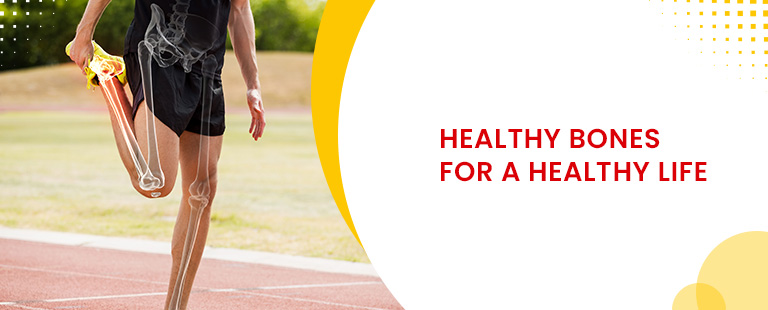Introduction:
In today’s world, when we hear “sports medicine,” we often picture professional athletes, high-tech training centers, and advanced sports science. But sports medicine isn’t just about elite athletes and high-performance goals. It has become a useful tool for everyone, no matter your age or how active you are. In the past, it was mostly about helping athletes be their best, but now it’s more about overall health.
Traditionally, sports medicine was all about helping athletes perform at their best. However, sports medicine is now more about overall well-being than catering exclusively to high-performance athletes. Whether you’re a teenager, a working adult, or a senior citizen, sports medicine has something valuable to offer.
In this blog, we discuss how sports medicine can improve the overall health of non-athletes and individuals at every stage of life.
What is Sports Medicine?
Sports medicine focuses on preventing, treating, and rehabilitating injuries related to sports and physical activity. Traditionally, it was mainly associated with athletes striving for peak performance. However, in recent times, there has been a shift in perspective. We now see sports medicine as a comprehensive approach to health that is relevant to everyone.
One common misunderstanding about sports medicine is that it’s exclusive to professional athletes. This misconception not only limits the broader applications of sports medicine but also discourages people from exploring its benefits. It’s essential to debunk these myths to make sports medicine more accessible and appealing to the general population.
Benefits of Sports Medicine for Non-Athletes:
Preventive Care:
Sports medicine is not just about treating injuries; it’s equally about preventing them. Following preventive care principles, like doing proper warm-ups and stretching and incorporating strength training, can greatly lower the chances of getting injured in your daily activities. Making small lifestyle changes based on sports medicine practices can play a significant role in ensuring your well-being in the long run.
Rehabilitation:
While athletes may be the primary focus of sports medicine rehabilitation, its principles are equally applicable to non-athletes recovering from injuries. Whether it’s a sprained ankle from a daily jog or a back strain from lifting household items, sports medicine techniques can aid in a quicker and more effective recovery.
Physical Therapy and Exercise Prescription:
One of the key aspects of sports medicine is the customization of exercise programs. Non-athletes can benefit from tailored exercise prescriptions to address specific health concerns or fitness goals. Physical therapy, commonly linked to athletes bouncing back from sports injuries, plays a vital role in improving the overall well-being of individuals with different levels of physical activity.
Age-Specific Considerations:
Children and Adolescents:
Instilling healthy habits early in life is paramount for lifelong well-being. Sports medicine interventions for children and adolescents focus on age-appropriate exercises, injury prevention, and addressing growth-related concerns. Encouraging a physically active lifestyle from a young age lays the foundation for a healthy future.
Adults:
As adults juggle work, family, and other responsibilities, staying physically active becomes increasingly challenging. Sports medicine offers practical solutions, from personalized exercise plans to nutritional guidance, helping adults maintain an active lifestyle. Moreover, sports medicine plays a crucial role in managing chronic conditions and promoting overall health in the adult population.
Elderly:
In the elderly population, sports medicine takes on a new significance. It becomes a tool for maintaining mobility, preventing falls, and ensuring a higher quality of life. Modified exercises, rehabilitation programs, and targeted interventions contribute to the overall well-being of the elderly, enabling them to age gracefully.
Integrating Sports Medicine into Daily Life:
Making sports medicine a part of daily life doesn’t require a professional athlete’s commitment. Simple yet effective strategies, such as regular physical activity, proper nutrition, and adequate recovery, can be seamlessly integrated into daily routines.
From morning stretches to mindful walks, incorporating sports medicine practices is about making sustainable choices that promote health. Some ways in which we can incorporate sports medicine into our daily routine are discussed below:
Morning Rituals:
Begin your day with simple yet effective sports medicine-inspired morning rituals like stretches to wake up your muscles and improve flexibility.
Daily Movement Breaks:
Whether you’re at the office or working from home, set a timer to remind yourself to stand up, stretch, or take a brisk walk. These breaks not only prevent stiffness but also enhance circulation and contribute to overall well-being.
Personalized Exercise Plans:
Consult with a sports medicine professional to create a personalized exercise plan that aligns with your lifestyle, considering factors such as fitness level, age, and any existing health conditions. This ensures that your exercise routine is both effective and sustainable.
Nutritional Guidance:
Good nutrition is a cornerstone of health, and sports medicine extends its reach into dietary habits.
Recovery Practices:
Incorporate recovery practices into your routine, such as foam rolling, stretching, or even mindfulness techniques like meditation, to aid in stress reduction and mental well-being.
Active Hobbies:
Infuse sports medicine into your leisure time by adopting active hobbies. Whether it’s hiking, cycling, or dancing, engaging in activities you enjoy ensures that staying active becomes an enjoyable part of your lifestyle. This not only contributes to physical health but also promotes mental and emotional well-being.
Conclusion:
In conclusion, sports medicine is not an exclusive domain reserved for athletes; it is a dynamic field with applications that benefit individuals of all ages and activity levels. By infusing morning rituals, movement breaks, personalized exercise plans, nutritional guidance, recovery practices, active hobbies, sleep hygiene, and mind-body connections into your routine, you create a comprehensive blueprint for a healthier and more fulfilling life.
So, whether you’re a seasoned athlete or someone simply looking to enhance your well-being, consider exploring the world of sports medicine – because health is a universal goal that transcends the boundaries of athleticism.





